You have no items in your shopping cart.
Post Requirement
Quality Tests on cement are carried out to check the strength and quality of the cement used in construction. It helps to identify the usage of cement for different purposes based on its durability and performance.
The following tests are conducted on cement in the laboratory are as follows:
- Fineness Test
- Consistency Test
- Setting Time Test
- Strength Test
- Soundness Test
- Heat of Hydration Test
- Tensile Strength Test
- Chemical Composition Test
Fineness test on cement
The fineness of cement is responsible for the rate of hydration, rate of evolution of heat and the rate of gain of strength. Finer the grains more is the surface area and faster the development of strength.
The fineness of cement can be determined by Sieve Test or Air Permeability test.
Sieve Test: Air-set lumps are broken, and the cement is sieved continuously in a circular and vertical motion for a period of 15 minutes. The residue left on the sieve is weighed, and it should not exceed 10% for ordinary cement. This test is rarely used for fineness.
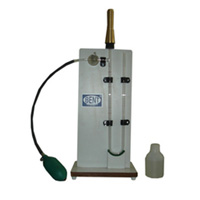
Air Permeability Test: Blaine's Air Permeability Test is used to find the specific surface, which is expressed as the total surface area in sq.cm/g. of cement. The surface area is more for finer particles.
Consistency test on cement
This test is conducted to find the setting times of cement using a standard consistency test apparatus, Vicat's apparatus.
Standard consistency of cement paste is defined as that water content which will permit a Vicat plunger of 10 mm diameter and 50 mm length to penetrate depths of 33-35 mm within 3-5 minutes of mixing.
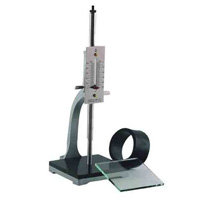
The test has to undergo three times, each time the cement is mixed with water varying from 24 to 27% of the weight of cement.
This test should be conducted at a constant temperature of 25°C or 29°C and at a constant humidity of 20%.
Setting Time of cement
Vicat's apparatus is used to find the setting times of cement i.e., initial setting time and final setting time.
Initial Setting Time: For this test, a needle of 1 mm square size is used. The needle is allowed to penetrate into the paste (a mixture of water and cement as per the consistency test). The time taken to penetrate 33-35 mm depth is recorded as the initial setting time.
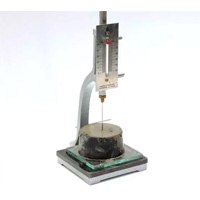
Final Setting Time: After the paste has attained hardness, the needle does not penetrate the paste more than 0.5 mm. The time at which the needle does not penetrate more than 0.5 mm is taken as the final setting time.
Strength test of cement
The strength of cement cannot be defined directly on the cement. Instead the strength of cement is indirectly defined on cement-mortar of 1:3. The compressive strength of this mortar is the strength of cement at a specific period.
Soundness test of cement
This test is conducted in Le Chatelier's apparatus to detect the presence of uncombined lime and magnesia in cement.
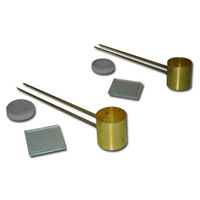
Heat of Hydration Test
During the hydration of cement, heat is produced due to chemical reactions. This heat may raise the temperature of concrete to a high temperature of 50°C. To avoid these, in large scale constructions low-heat cement has to be used.
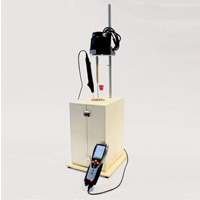
This test is carried out using a calorimeter adopting the principle of determining heat gain. It is concluded that Low-heat cement should not generate 65 calories per gram of cement in 7 days and 75 calories per gram of cement in 28 days.
Tensile Strength of Cement
This test is carried out using a cement-mortar briquette in a tensile testing machine. A 1:3 cement-sand mortar with the water content of 8% is mixed and moulded into a briquette in the mould.
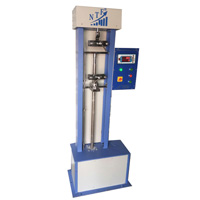
This mixture is cured for 24 hours at a temperature of 25°C or 29°C and in an atmosphere at 90% relative humidity.
The average strength for six briquettes tested after 3 and 7 days is recorded.
Chemical Composition Test
Different tests are conducted to determine the amount of various constituents of cement. The requirements are based on IS: 269-1998, is as follows:
- The ratio of the percentage of alumina to that of iron oxide should not be less than 0.66.
- Lime Saturation Factor (LSF), i.e., the ratio of the percentage to that of alumina, iron oxide and silica should not be less than 0.66 and not be greater than 1.02.
- Total loss on ignition should not be greater than 4%.
- Total sulphur content should not be greater than 2.75%.
- Weight of insoluble residue should not be greater than 1.50%.
- Weight of magnesia should not be greater than 5%.
Field Tests of Cement
The following tests should undergo before mixing the cement at construction sites:
Colour Test of Cement
The colour of the cement should not be uneven. It should be a uniform grey colour with a light greenish shade.
Presence of Lumps
The cement should not contain any hard lumps. These lumps are formed by the absorption of moisture content from the atmosphere. The cement bags with lumps should be avoided in construction.
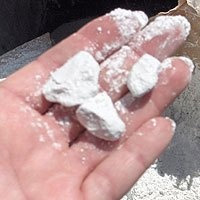
Cement Adulteration Test
The cement should be smooth if you rubbed it between fingers. If not, then it is because of adulteration with sand.
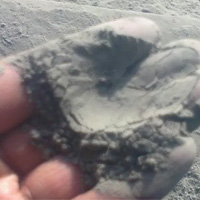
Float Test
The particles of cement should flow freely in water for sometime before it sinks.
Date of Manufacturing
It is very important to check the manufacturing date because the strength of cement decreases with time. It's better to use cement before 3 months from the date of manufacturing.
Check Out: Ingredients of Quality Cement and their Functions
Technically Reviewed by Rajesh Pagadala, MS, Founder & CEO - BuildersMart. Written by Vani paspula, Content Manager.
Vani Paspula
Casanda Gc
posted on Jan 13, 2021 10:44:14 AMvijaycorneliues j
posted on Dec 18, 2020 1:54:12 PMRaymond
posted on Dec 16, 2020 10:19:47 AMThanks
Vibhu Halpati
posted on Oct 27, 2020 6:13:20 PMPrabhakar Malgate
posted on Oct 15, 2020 11:09:06 AMRahul
posted on Oct 6, 2020 10:55:00 AMShubham Kumar
posted on Sep 24, 2020 10:38:18 AMPravalika bhukha
posted on Sep 8, 2020 11:27:40 AMMUNENDRA KUMAR
posted on Aug 31, 2020 10:49:55 AM













Karthikpusuluri
posted on Jun 14, 2021 9:37:37 AMThanks for this information...